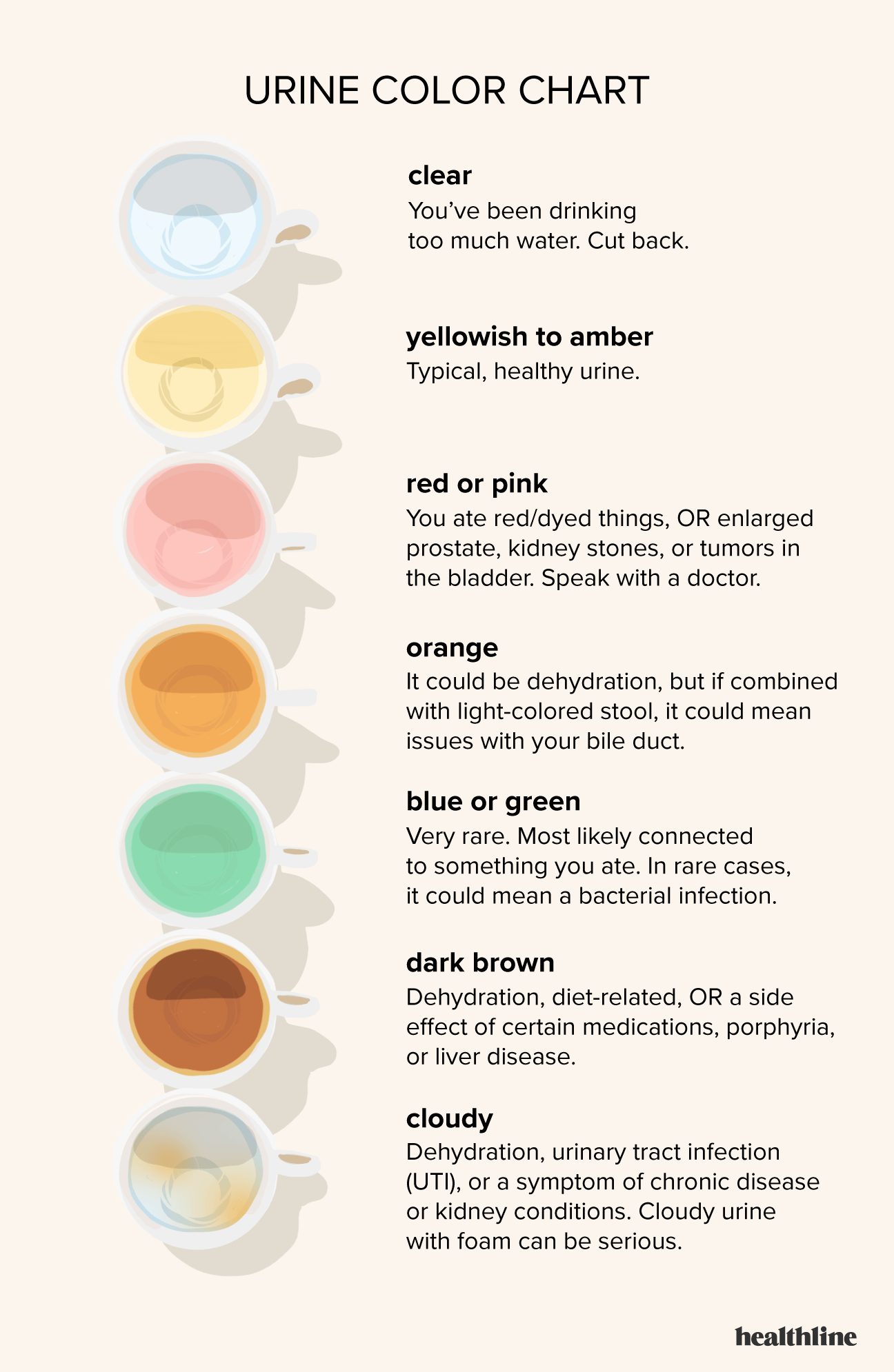It’s a question we ask ourselves sometimes, maybe even more frequently than we’d like to admit: What color is my pee supposed to be? We might glance at the porcelain throne after a bathroom break, thinking, “Hmm, that’s a bit…yellow.” But what exactly is normal? Is that a cause for concern, or is it just the coffee talking?

Image: heroic.norushcharge.com
The color of your urine can actually tell you a lot about your hydration levels, your overall health, and even what you’ve been eating. But fear not, deciphering the message your pee is trying to send doesn’t require a medical degree. By understanding the basics of urine color, you can gain a better understanding of your own body and take proactive steps toward better health – all from a simple glance at the toilet bowl.
Unveiling the Hues of Hydration
Let’s start with the basics. Urine is essentially a liquid waste product that our kidneys filter out from our blood. It’s made up mostly of water, but also includes various waste products, electrolytes, and pigments. The concentration of these elements can directly affect the color of your urine.
Think of it this way: A clear glass of water is pale and transparent. Now imagine adding a drop of food coloring. The more drops you add, the darker the water becomes. The same principle applies to urine. The more concentrated the waste products in your urine, the darker it will appear.
Decoding Your Urine’s Messages
So, what does the color of your urine actually tell you? Here’s a breakdown of the spectrum:
The Color of Clear and Healthy
- Pale Yellow: This is the ideal color! It means you are well-hydrated.
- Straw-Colored (Light Yellow): This is also perfectly normal and indicates a healthy level of hydration.

Image: anddreaminhaslas.blogspot.com
The Colors of Caution
- Dark Yellow: This is a sign that your body is dehydrated. Drink up!
- Amber: A deeper amber color should be a red flag that you need to consume more fluids.
- Orange: This could be caused by certain medications (like B vitamins or laxatives), dehydration, or even liver problems. If you notice this color for an extended period, especially with other symptoms like fatigue, it’s best to schedule a visit with your doctor.
The Colors of Concern
- Red or Pink: This could be a sign of a urinary tract infection (UTI), kidney stones, or blood in your urine. If this color continues or is accompanied by other symptoms, such as pain or burning during urination, it’s important to seek medical attention promptly.
- Dark Brown: This could indicate liver problems, dehydration, or the presence of a pigment called bilirubin, which can be increased in people with liver disease.
- Green or Blue: Unusual, but possible! Green might indicate an infection or might come from dyes consumed in food or drinks, and sometimes from food coloring. Blue urine is most often caused by food coloring.
Beyond Color: Other Clues to Body’s Signals
While color is an important indicator, it’s crucial to consider other aspects of your urine as well, such as:
- Smell: A strong ammonia-like odor could signal dehydration. If you notice a sweet or fruity smell, it could be a sign of diabetes.
- Foaminess: Excessive foam can be a sign of protein in your urine, which could indicate kidney problems.
- Frequency: If you find yourself rushing to the bathroom often, you might have a UTI, diabetes, or simply be drinking too much fluids.
Expert Tips for Staying Hydrated
“Staying hydrated is crucial for overall health,” says Dr. Sarah Thompson, a board-certified nephrologist. “Adequate hydration helps your body flush out toxins, regulate temperature, and maintain electrolyte balance.”
Here are some expert-backed tips to ensure you’re keeping your system properly flushed:
- Drink water throughout the day: Aim for at least eight glasses of water daily.
- Carry a reusable water bottle with you: This makes it easier to stay hydrated on the go.
- Choose water over sugary drinks: Sugary drinks can actually dehydrate you.
- Eat fruits and vegetables: They contain water and other electrolytes.
What Color Is Urine Supposed To Be
Taking Charge of Your Health
Understanding the messages your pee is trying to send can empower you to make informed decisions about your health. Remember, your urine’s color is just one piece of the puzzle, and it’s important to consider other symptoms you might experience.
If you notice any significant changes in your urine’s color or other unusual symptoms, don’t hesitate to consult your doctor. Early detection is key to addressing any potential health issues and taking control of your well-being.






